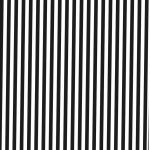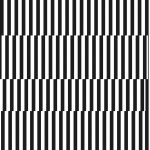I was doing a very basic calculation of VR corrections during my exposure. Now to keep things simply let's assume my curtain speed is 1/250s, VR detects every 1/1000s and corrects 1/1000s after detection.
What happens at a 1/1000s is roughly like this (BC - back curtain, FC - front curtain):
1/1000s (duration 1/222s)
0,000s : BC 0 - FC 0
0,000s : VR reset and active
0,001 : BC 0 – FC 25
0,001 : shake detected – correction01 signal
0,002 : BC 25 - FC 50
0,002 : shake detected – correction02 signal
0,002 : correction 01 applied
0,003 : BC 50 - FC 75
0,003 : shake detected – correction03 signal
0,003 : correction 02 applied
0,004 : BC 75 - FC 100
0,004 : shake detected – correction04 signal
0,004 : correction 03 applied
0,005 : BC 100
0,005 : shake detected – correction05 signal
0,005 : correction 04 applied
0,006 : correction 05 applied
The commands executed at 0.005s is unclear to me because there's no way I know what occurs first. Still, once the signal is sent, it will go through the routine since there's nothing that can override it.
Anyways; what becomes obvious is that any correction that occurs is only applied to a part of the shot since the back curtain is already on the move together with the front.
Up to 1/500s the full sensor is exposed at the time of the first correction which applies it to the full shot but the higher in shutter speed we go, the less that area will become. Each doubling of the speed halves the gap between the FC and BC.
The curtain speeds for cams can differ and it's a little different than this rough example but at higher shutters it'll result in the same behavior. The main issue I see with this is that at a high enough speed to freeze any movement, the actual correction could do more harm than good.
If anything is wrong in what I mention here, feel free to point out.
To visualize the difference in a somewhat exaggerated example:
Without VR shake would result into a distortion of the image during the exposure at higher shutters since it occurs gradually:

While a sudden correction would be very different, especially since the correction is done for a situation that already changed:



